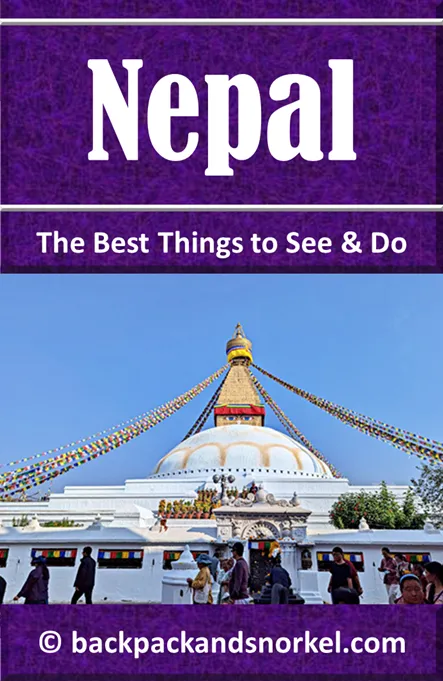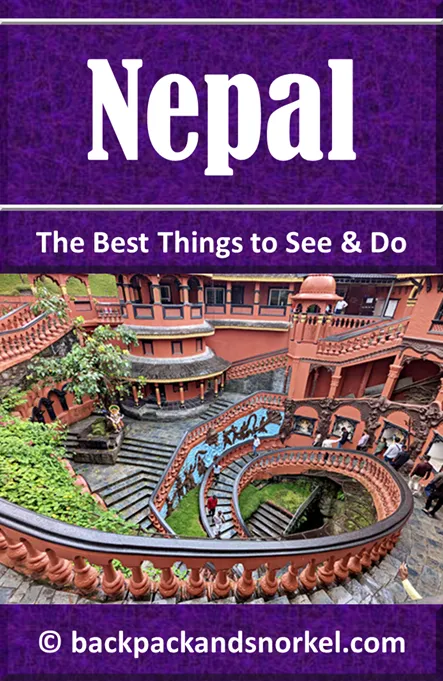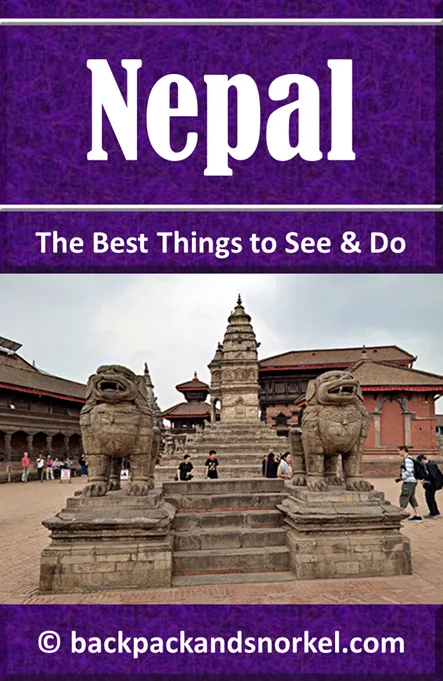Discover Oku Bahal: Patan's Ancient Monastery of Ritual and Art - Nepal Purple Travel Guide
(map, reviews)
This is Premium Content! To access it, please download our
Backpack and Snorkel Purple Travel GuideLocated only a few feet away from Mahabouddha Temple, Oku Bahal Rudra Varna Mahavihar is another temple that is absolutely worth visiting.
We have read that there is an admission fee of Rs50 per person that enables you to also visit nearby Mahabouddha Temple, but we have not seen anyone charging the fee.
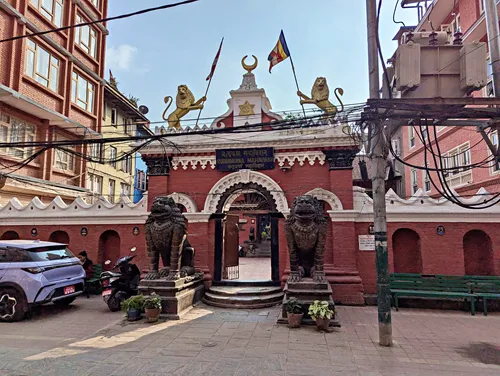
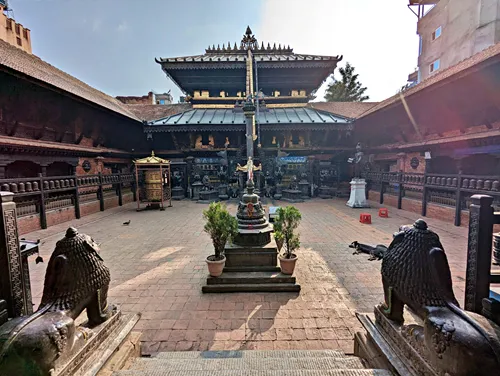
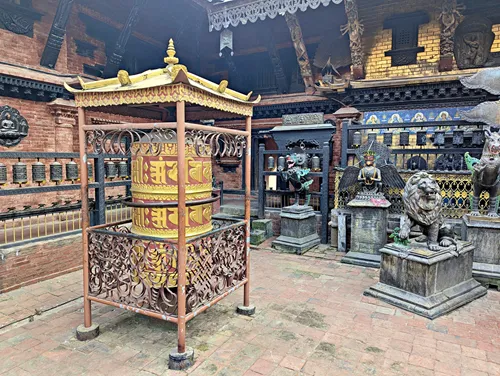
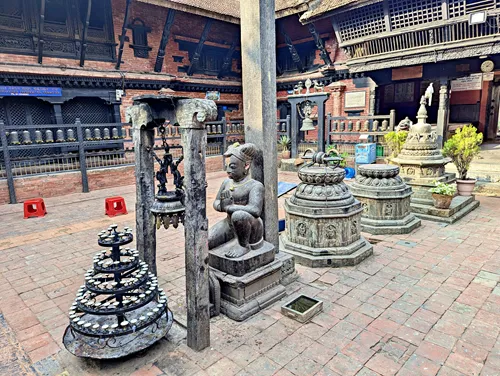
Here at Backpack and Snorkel Travel Guides, we typically promote self-guided walking tours.
But we realize that not everybody likes to walk by themselves in a foreign city. So, just in case that you rather go with ab guide: NO PROBLEM! Please see the Viator tours below.
free GuruWalk tours
paid Viator tours
Origin of the name Oku Bahal Rudra Varna Mahavihar
The name ‘Oku Bahal’ refers to:
‘Oku’, which` is derived from the Newar language, where it signifies an inner or sacred space within a larger complex, typically a Buddhist monastery or temple.
‘Bahal’, which signifies a communal space that serves both as a religious site and a gathering point for the local community.
‘Rudra Varna Mahavihar’ connects to the rich Vajrayana Buddhist tradition that has flourished in Nepal for centuries.
‘Mahavihar’ means a large monastery or a center for Buddhist teachings,
‘Rudra’ is often associated with Lord Shiva in Hinduism, where it refers to one of Shiva's many aspects. In the broader context of Buddhist traditions in Nepal, however, Rudra is seen more as a protective and fierce deity who is linked to wisdom, energy, and the overcoming of obstacles. In Vajrayana Buddhism, which is practiced in the Kathmandu Valley, Rudra could be interpreted as a fierce protector of the Dharma (Buddhist teachings) and a force that assists practitioners in their spiritual journey by dispelling negative influences or ignorance.
In the specific context of ‘Rudra Varna Mahavihar’, it is highly probable that ‘Rudra’ refers to King Rudradev, who undertook significant renovations likely between 1167 and 1175.‘Varna’ can be translated as ‘color’ or ‘aspect’, and in this case, it refers to a particular ‘aspect’ or ‘manifestation’ of a deity. Varna often signifies a sacred quality or characteristic of something, in this case, the characteristics or attributes of Rudra. So, Rudra Varna can be understood as a reference to the specific aspect of Rudra that embodies the protective and transformative qualities within the context of the Buddhist teachings and practices at the Mahavihar.
When put together, Rudra Varna Mahavihar refers to a large Buddhist monastery dedicated to the protective and transformative aspect of Rudra, where monks and devotees engage in various Buddhist rituals, meditation practices, and teachings. The Mahavihar serves as both a place of religious worship and a center for learning, offering insights into the deeper philosophical aspects of Buddhist teachings while also honoring the role of Rudra as a protector.
In the case of Oku Bahal Rudra Varna Mahavihar, the monastery serves as a spiritual and cultural landmark in Kathmandu, and the name Rudra Varna reflects its association with the protection of Buddhist teachings and the broader Vajrayana Buddhist traditions that have shaped the region’s history.
History and Architecture of Oku Bahal Rudra Varna Mahavihar
The foundation of the Mahavihar is traditionally credited to King Shivadev (he ruled from 590 to 604 AD) during the Lichhavi period in the 6th century. The Lichhavi dynasty played a significant role in promoting Buddhism in the Kathmandu Valley, and many early monasteries were constructed under their patronage. However, like many ancient structures, the exact details surrounding the construction and the exact time of building are unclear. Archaeological evidence, like radiocarbon dating of certain structural elements, points to some parts of the site having 9th-century origins.
King Shivadev’s contribution is often highlighted because of his dedication to establishing Buddhist monasteries throughout the valley.
Likely between 1167 and 1175, significant additions to Oku Bahal Rudra Varna Mahavihar were undertaken by King Rudradev, specifically the installation of images of transcendent Buddhas within the monastery complex.
In 1680, the impressive gate and the two flag-bearing lion statues positioned on top were added.
The central courtyard is surrounded by beautiful Newar architecture with its detailed woodwork, pagoda-style roofing, and exquisite craftsmanship, and the many fascinating stone and metal statues in the courtyard.
Back to your self-guided tour
Author: Rudy at Backpack and Snorkel
Bio: Owner of Backpack and Snorkel Travel Guides. We create in-depth guides to help you plan unforgettable vacations around the world.
Other popular Purple Travel Guides you may be interested in:
Like this Backpack and Snorkel Purple Travel Guide? Pin these for later:
